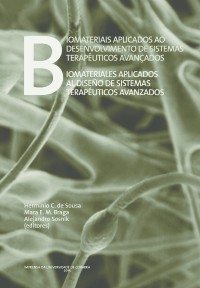Please use this identifier to cite or link to this item:
https://hdl.handle.net/10316.2/36924| DC Field | Value | Language |
|---|---|---|
| dc.contributor.author | Landín, Mariana | |
| dc.date.accessioned | 2015-07-21T09:32:58Z | |
| dc.date.accessioned | 2020-09-09T09:35:17Z | - |
| dc.date.available | 2015-07-21T09:32:58Z | |
| dc.date.available | 2020-09-09T09:35:17Z | - |
| dc.date.issued | 2015 | - |
| dc.identifier.isbn | 978-989-26-0880-8 | |
| dc.identifier.isbn | 978-989-26-0881-5 (PDF) | |
| dc.identifier.uri | https://hdl.handle.net/10316.2/36924 | - |
| dc.description.abstract | The basics of various Artificial Intelligence techniques (artificial neural networks (ANN), fuzzy logic and genetic algorithms), its advantages and limitations are presented in this chapter. The application of ANN to the design of dosage forms contributes to the in-depth knowledge of how the variables involved in the production of a pharmaceutical formulation affect the properties of the final product and the risks associated with the changes, and therefore, to its design space. This facilitates the research in the dosage forms field, the development of new formulations, and/or the improvement of the existing ones. The case study is intended to illustrate the applicability of these technologies through a simple example; the improvement of rifampicin solubility into the development process and optimization of hard capsules for oral administration. ANN allows the modelling of the effect of the variability of ingredients (composition) on the properties of the formulation (rifampicin solubility). The combination ANN-fuzzy logic generates explicit rules that contribute to the understanding of generated systems. Genetic algorithms allow selecting the most appropriate combination depending on specific requirements, and therefore, the optimal formulation. | eng |
| dc.description.abstract | En este capítulo se presentan los aspectos básicos de diversas técnicas de inteligencia artificial (las redes neuronales artificiales, la lógica difusa y los algoritmos genéticos), sus ventajas y sus limitaciones. La aplicación de redes neuronales artificiales al diseño de formas farmacéuticas contribuye al conocimiento en profundidad de cómo las variables implicadas en la producción de una formulación farmacéutica afectan las propiedades del producto final y los riesgos asociados a su cambio, y por lo tanto, al establecimiento de su espacio de diseño. Ello facilita, no solamente el desarrollo de nuevas formulaciones, sino la mejora de las existentes y también la investigación en el ámbito de las formas de dosificación. El caso de estudio empleado pretende ilustrar la aplicabilidad de estas tecnologías utilizando un ejemplo sencillo, la mejora de la solubilidad de rifampicina dentro de un proceso de desarrollo y optimización de cápsulas duras para la vía oral. En este caso, el empleo de las redes neuronales artificiales permite la modelización del efecto de las variables (composición) implicadas en las características de la formulación (solubilidad de rifampicina). Su combinación con la lógica difusa genera reglas explícitas que contribuyen a la comprensión de los sistemas generados. Los algoritmos genéticos permiten seleccionar la/s combinaciones más adecuadas en función de requerimientos específicos. Es decir la optimización de las formulaciones. | por |
| dc.language.iso | spa | - |
| dc.publisher | Imprensa da Universidade de Coimbra | por |
| dc.relation.ispartof | http://hdl.handle.net/10316.2/36860 | por |
| dc.rights | open access | - |
| dc.subject | Modeling | eng |
| dc.subject | Artificial intelligence | eng |
| dc.subject | Artificial neural networks | eng |
| dc.subject | Fuzzy logic | eng |
| dc.subject | Genetic algorithms | eng |
| dc.subject | Optimization | eng |
| dc.subject | Modelización | por |
| dc.subject | Inteligencia artificial | por |
| dc.subject | Redes neuronales artificiales | por |
| dc.subject | Lógica difusa | por |
| dc.subject | Algoritmos genéticos | por |
| dc.subject | Optimización | por |
| dc.title | Introducción al uso de sistemas de inteligencia artificial para modelizar, comprender y optimizar formulaciones farmacéuticas | por |
| dc.title.alternative | Introduction to the application of Artificial Intelligence tools for modelling, understand and optimize pharmaceutical formulations | eng |
| dc.type | bookPart | por |
| uc.publication.firstPage | 521 | - |
| uc.publication.lastPage | 554 | - |
| uc.publication.location | Coimbra | por |
| dc.identifier.doi | 10.14195/978-989-26-0881-5_13 | - |
| uc.publication.section | Parte II: Tecnologias aplicadas á concepção e produção de sistemas terapêuticos = Tecnologías aplicadas al diseño y producción de sistemas terapéuticos/ Applied technologies for the design and production of therapeutic systemjs | por |
| uc.publication.digCollection | PB | por |
| uc.publication.orderno | 14 | - |
| uc.publication.area | Ciências da Saúde | por |
| uc.publication.bookTitle | Biomateriais aplicados ao desenvolvimento de sistemas terapêuticos avançados | - |
| uc.publication.manifest | https://dl.uc.pt/json/iiif/10316.2/36924/208388/manifest?manifest=/json/iiif/10316.2/36924/208388/manifest | - |
| uc.publication.thumbnail | https://dl.uc.pt/retrieve/11136508 | - |
| uc.publication.parentItemId | 54553 | - |
| uc.itemId | 69709 | - |
| item.grantfulltext | open | - |
| item.fulltext | With Fulltext | - |
| Appears in Collections: | Biomateriais aplicados ao desenvolvimento de sistemas terapêuticos avançados | |
Files in This Item:
| File | Description | Size | Format | |
|---|---|---|---|---|
| cap_tulo_13_-_introducci_n_al_uso_de_sistemas_de_inteligencia_artificial_para_modelizar__comprender_y_optimizar_formulaciones_farmac_uticas.pdf | 1.98 MB | Adobe PDF |  |
Items in DSpace are protected by copyright, with all rights reserved, unless otherwise indicated.
